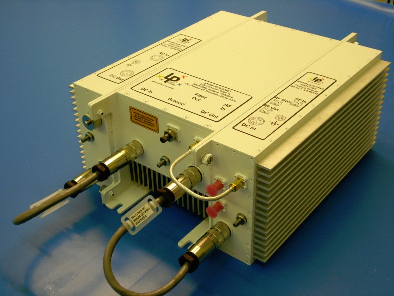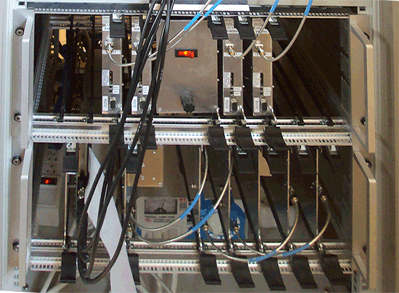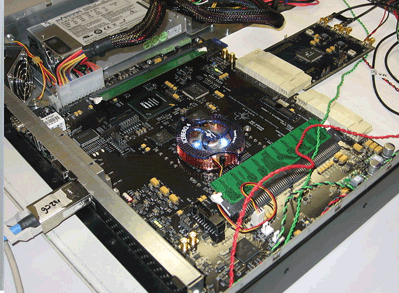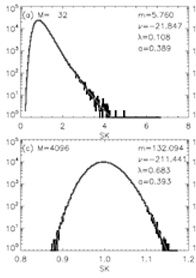About Advanced Technology
Below are some highlights of the technology advances that will be implemented in the OVSA Expansion project. These advances were made possible through previous NSF and NASA funding to NJIT and NRAO in support of FASR development, and funding to other institutions to support similar development for other broadband radio instruments.
Broadband Optical RF Transmission
20 GHz Optical Links: The radio frequency (RF) signal from 1-18 GHz will be amplified and transmitted over optical fiber in a single broad band, eliminating the need for distributing local oscillator signals and downconversions of narrower bands in the field. This greatly simplifies the system at the antenna, and allows all subsequent signal conditioning to be done in a temperature- and humidity-controlled environment.

XiMod Optical Link (Linear Photonics)
Frequency-Agile Receivers
1-18 GHz Frequency-Agile Receivers with 500 MHz Instantaneous Bandwidth: The analog processing of the RF is done in an environmentally stable control building, where the signal is downconverted into 500 MHz bandwidth intermediate frequency (IF) for digitization. The receiver system will be capable of switching rapidly (20 ms) to any 500 MHz band, with gain control to 0.5 dB, to provide the digitizers with a stable, fixed amplitude signal during flares. A similar system was built for the Korean Radio Burst Locator (KSRBL, Dou et al. 2009, PASP, 121, 512).

1-18 GHz eceiver system built for Korean Solar Radio Burst Locator
CASPER Correlator
Dual-Polarization, 16-Antenna Spectral Line Correlator: The correlator will utilize the "next-generation" Roach-2 CASPER hardware based on the Virtex 6 FPGA (Field Programmable Gate Array). The design calls for the 500 MHz bandwidth signals from each antenna to be divided into 4069 individual spectral channels, to provide a maximum spectral resolution of 122 kHz per channel (nearly 140000 frequencies from 1-18 GHz). The system will have two parallel channels, to provide simultaneous observations in both right-circular (RCP) and left-circular (LCP) polarizations. The spectal channels from each antenna will be correlated with those of all of the other antennas (thirteen 2-m and two 27-m antennas) plus an extra test input, to handle a total of 16 dual-polarization inputs. The number of frequencies will be reduced to science resolution (varying between 1 and 50 MHz over the 18 GHz range) after flagging RFI (see below).

CASPER Roach board. The OVSA correlator will be based on next generation Roach-2.
Radio Frequency Interference (RFI) Excision
Spectral Kurtosis RFI Excision: The high frequency resolution of the correlator allows us to employ in hardware the calculation of both power and power-squared, which is used to generate the spectral kurtosis estimator (Nita & Gary, 2010, PASP, 122, 595) for real-time RFI excision (Gary, Liu & Nita, 2010, PASP, 122, 560). The excision can be applied in real time, either in hardware or later during software processing. This ensures that a minimum amount of data will be compromised by the ever-increasing radio interference that plagues any broadband radio array.

Statistical distribution of the SK estimator for Gaussian noise (data, overlaid with curve from theory), for two different sets of instrumental parameters. RFI appears as deviations from the theory.